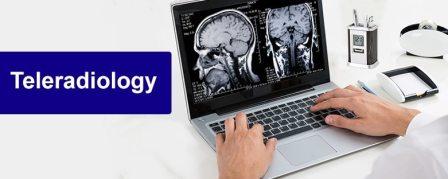
Bringing advanced radiology services to Belize through the Teleradiology Revolution is a noble endeavor that has the potential to significantly improve healthcare in the country. Teleradiology is the remote interpretation of medical images, such as X-rays, CT scans, and MRIs, by radiologists located elsewhere, often in different parts of the world. This technology can bridge the gap in access to radiology services, especially in underserved and remote areas like Belize. Here are some key points to consider:
- Improved Access to Expertise: Belize may face challenges in having a sufficient number of radiologists to meet the healthcare demands of the population. Teleradiology can connect local healthcare facilities to a network of radiologists, providing quick access to expert interpretations and diagnoses.
- Reduced Turnaround Time: Teleradiology allows for faster image interpretation and reporting, which is critical in emergency situations. Faster diagnoses can lead to more timely treatment and improved patient outcomes.
- Cost-Efficiency: Setting up and maintaining advanced radiology equipment can be costly. Teleradiology can reduce these costs by sharing resources and providing access to a broader range of equipment and expertise.
- Continuing Education: Teleradiology can also facilitate continuing education and knowledge exchange among local healthcare providers and the remote radiologists. This can contribute to skill development and the adoption of best practices in radiology.
- Quality Assurance: Implementing a teleradiology program should include robust quality assurance measures to ensure accurate and consistent interpretations of medical images. This may involve regular audits, peer reviews, and adherence to international standards.
- Technical Infrastructure: Developing a reliable and secure telecommunications infrastructure is essential for successful teleradiology implementation. High-speed internet and secure data transmission are critical components.
- Regulatory and Legal Considerations: Regulations and legal frameworks surrounding teleradiology must be established to protect patient data, ensure licensing and credentialing of remote radiologists, and maintain a high standard of care.
- Privacy and Security: Patient data privacy and security should be paramount. Compliance with international standards, such as HIPAA (Health Insurance Portability and Accountability Act), should be a priority.
- Community Outreach and Education: It’s crucial to educate the local healthcare community, as well as patients, about the benefits of teleradiology and how to best utilize this service.
- Telemedicine Integration: Integrating teleradiology into a broader telemedicine network can enhance overall healthcare services, allowing for more comprehensive patient care.
- Research and Data Collection: Teleradiology can also contribute to the collection of valuable healthcare data, aiding in research, epidemiology, and disease monitoring efforts.
Overall, bringing advanced radiology services to Belize through teleradiology has the potential to enhance the country’s healthcare system by improving access, reducing costs, and providing high-quality diagnostic services. However, it must be implemented carefully with a focus on quality, security, and local engagement to maximize its benefits.
Service Areas:- Bahrain – Manama: Muharraq: Riffa: Hamad Town: Isa Town: Juffair: Seef, Madinat Hamad: A’ali: Hidd:.
